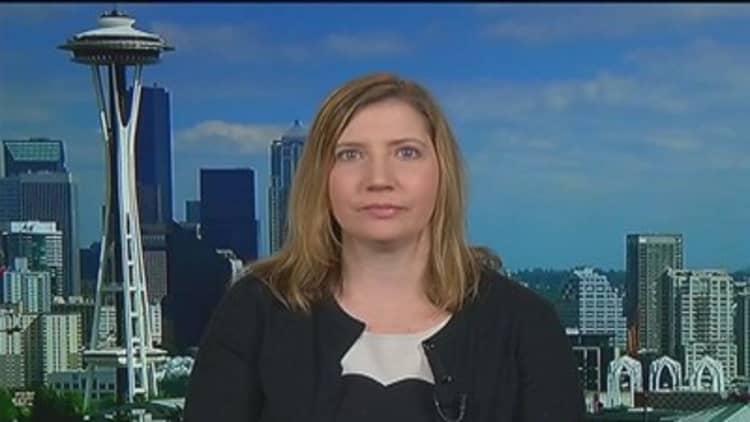After two months of sharp increases in food prices, grocers are starting to pass along their higher wholesale costs to consumers.
Beverly Cabellon, 61, of Pleasant Hill, Calif., was taken aback by the $38 price for two steaks at Costco recently, up from the $27 she paid last September. "I will be grilling more vegetables and shrimp this summer," she says, adding that she and her husband will likely eat beef once a month instead of weekly. "And I may switch to pork and chicken."
Read MoreInsurers offer new incentives to eat healthy
More from USA Today:
Test Drive: Chevy SS is new take on old school
New venture chills ice cream to order
Attention retirees: You can still have fun. Here's how.
Food prices increased 0.4% after posting a similar jump in February, the Bureau of Labor Statistics said Tuesday. That's the largest monthly increase since September 2011. Beef, pork, poultry, eggs and milk have had the most dramatic price hikes as drought, a virus outbreak and rising exports have thinned U.S. supplies.
Overall consumer prices rose 0.2% in March, a bit more rapidly than in recent months, and annual inflation was 1.5%, up from 1.1% in February. Still, that's well below the Federal Reserve's 2% target as falling gasoline prices offset rising food costs.
Read More
But the higher food bills are squeezing households still struggling with meager wage gains and could crimp spending just as the recovery is expected to accelerate.

Cheryl Stewart, 38, of Perry Hall, Md., says higher prices for meats and milk have prompted her to drive 10 to 15 miles to grocery stores in low-income areas that carry more obscure brands at lower prices. She also spreads the food shopping for her family among three or four stores to get the best prices.
"Living standards will suffer as a larger percentage of household budgets are spent on grocery store bills, leaving less for discretionary spending," says economist Chris Christopher of IHS Global Insight.
Read More
A drought that thinned cattle herds two years ago has driven up wholesale beef prices 23% the past year, according to Sterling Marketing. Meanwhile, a virus outbreak in the hog population has pushed up pork prices 56%, the firm says.
Retailers have absorbed much of the increases. Retail beef and pork prices are up about 7% and 5.3% respectively the past year. But Sterling owner John Nalivka expects sharper hikes of about 10% in 2014.
Giant Food, which operates supermarkets in the Mid-Atlantic area, said in a statement the chain "continues to work with our suppliers to negotiate the lowest prices and strongest promotions possible for our customers."
Read More
Restaurants are getting creative. Cory Wilk, owner of City Range Steakhouse, with two outlets in the Greenville, S.C., area, says frugal consumers typically won't tolerate sharply higher prices. So instead, he says he uses smaller and secondary cuts of meat, and combines meat and fish dishes "without compromising quality."
"We had to do some major engineering with our menu," he says. Still, he says, sales are roughly flat this year.
—By Paul Davidson of USA Today

